The best Chinese cars on sale in the UK – tested and rated
Intrigued by a Chinese car? These are the best on the market right now

News
6 mins read
19 February 2025
Share
The rate at which Chinese cars are improving is unprecedented.
Twenty-five years ago, China was knocking out models like the Lubao CA6410 – essentially the front end of an Austin Montego mated with the rear end of an Austin Maestro and a Toyota engine.
But today, via decades of economic growth, a few copycat creations and concentrating firmly on electric cars, Chinese models are up there with the best in the business.
Related articles
- Chunky new Jeep Compass brings hybrid, PHEV and 404-mile EV
- You can sleep in Xpeng’s new EV – but should you?
- Xpeng G6 review
- Xpeng to bring seven-seat X9 ‘starship’ and G9 to UK in 2026
- Xpeng G6 to be launched in the UK in a matter of weeks
They tend to be among the cheapest cars on the market – but don’t don’t think it’s all price-driven pragmatism. They’re catching up with European, Japanese and Korean efforts in terms of interior quality and driving fun too.
We currently peg the Xpeng G6 as the best Chinese car on sale in the UK. It really is a credible Tesla Model Y rival, with an upmarket interior, decent ride quality and a price advantage over the American EV.
Below you will find our favourite cars from Chinese companies.
1. Xpeng G6
8
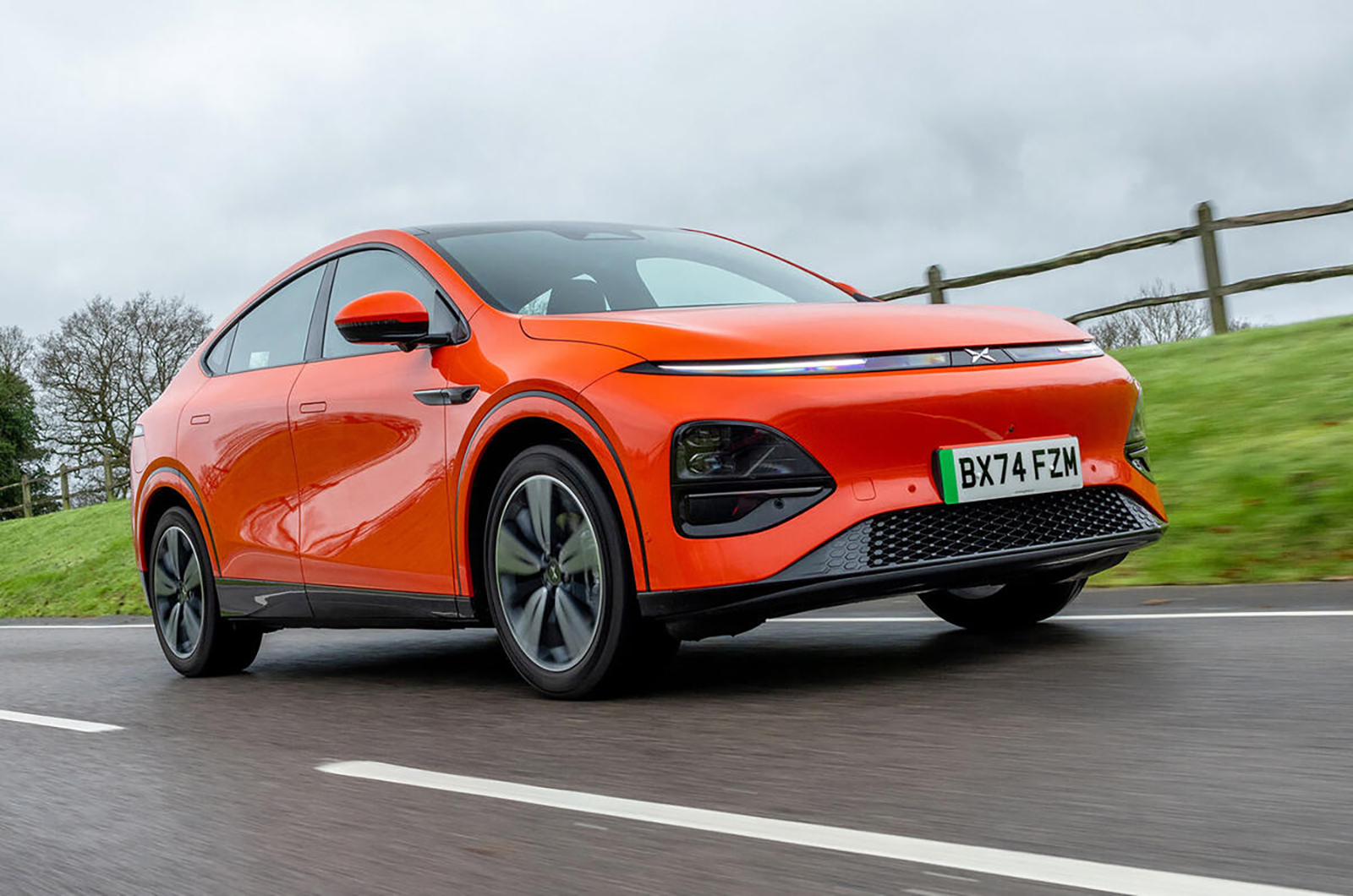
- Design7
- Interior8
- Performance8
- Ride & Handling7
- Costs8
Pros
Long range and fast charging
Good value compared with Model Y
Spacious interior
Cons
Anonymous looks
Too many controls on the touchscreen
Firm ride
Best for: a slick user experience
The G6 was revealed in 2024 and conceived in almost every respect as a direct alternative to the Tesla Model Y. And do you know what? This electric SUV gives Silicon Valley’s best seller a run for its money.
The G6 is objectively a well-specified and competitively engineered alternative to the Model Y.
The company behind it describes itself as a start-up led by a tech entrepreneur, and indeed the car feels very techy inside. There’s a big screen with the latest Qualcomm processor, which is quick and easy to use.
Interior materials are high-quality for the price and the seats have a lot of adjustment. But it does lack physical controls.
There are two power options: 254bhp and 281bhp. Both are swift, quiet and smooth. We would recommend the lesser one, as there’s very little chance you would notice the extra 27bhp in the real world.
Read our Xpeng G6 review
Finance this car with Drivenfi
Latest Reviews

Used Porsche Panamera 2016-2023 review
10
Used Porsche Panamera 2016-2023 review

Renault 4

Land Rover Discovery Sport
7

Porsche Panamera Turbo E-Hybrid and Turbo S E-Hybrid
10
Porsche Panamera Turbo E-Hybrid and Turbo S E-Hybrid

Toyota Prius
8
Read our review
Car review

Xpeng G6
New Chinese mid-sized electric SUV majors on space, tech, charging speed and value
Back to top
2. MG 4 EV
8
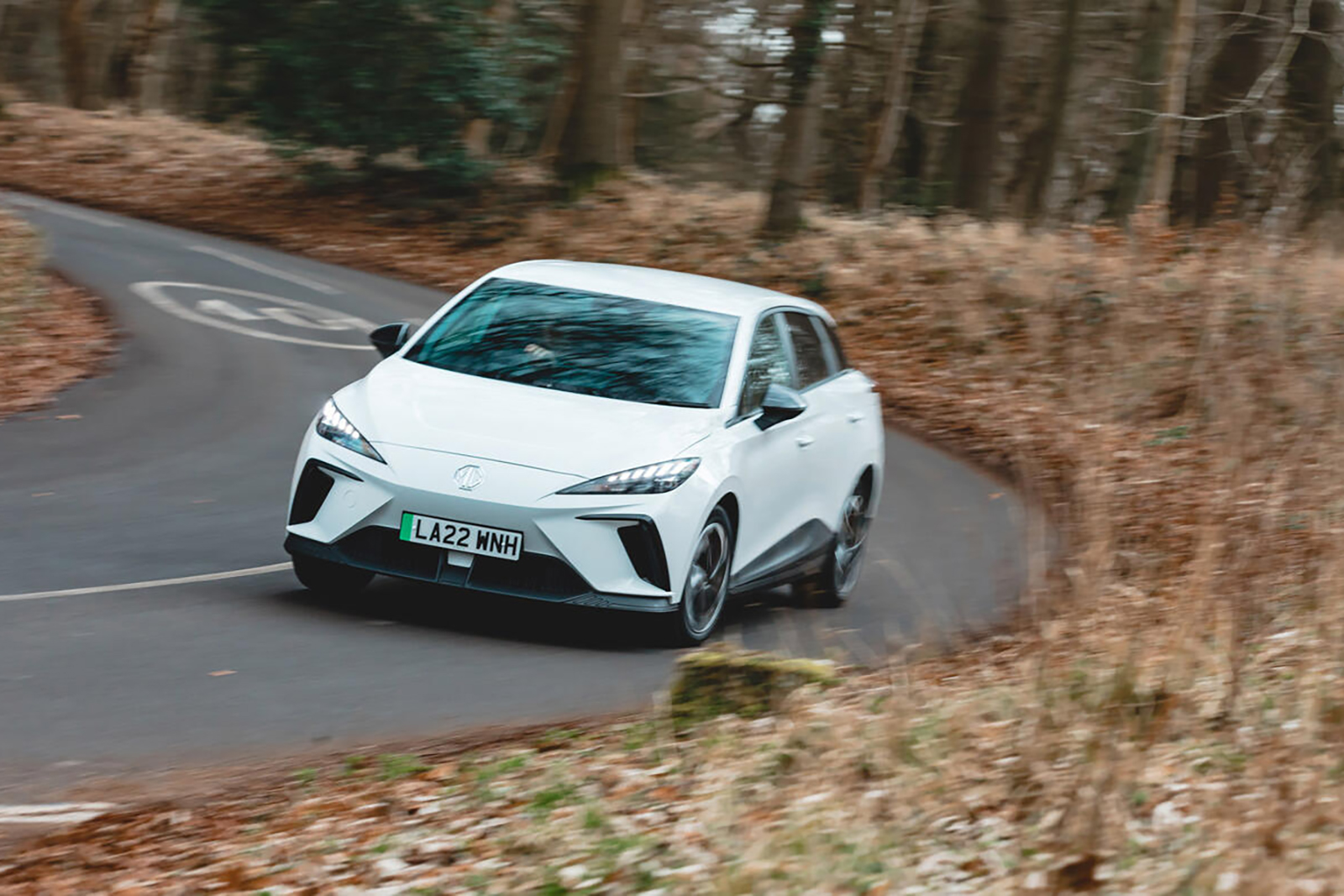
- Design8
- Interior7
- Performance7
- Ride & Handling8
- Costs8
Pros
Excellent value
Strong levels of interior space for the size
Genuinely good fun to drive
Cons
Driver assistance features need refining
Interior material quality not the best
Some interior usability niggles
Best for: zero-emission hatchbacks
The 4 is the car that really changed things for MG, shuffling the SAIC-owned brand from a builder of cheap but boring transportation devices with long warranties and tempting finance offers to a manufacturer of note.
The MG 4 is simply a well-rounded electric hatchback at a price that appears impossible to beat.
Key to this experience is the way this hatchback drives. It flows well, with strong, reassuring brakes and a rear-wheel-drive platform that provides a bit of fun when poked.
The interior is sensible and well laid out too. The heating controls are easier to use than in some EVs and the range pegs it as one of the most efficient on the market.
It’s even available as a dual-motor, four-wheel-drive hot hatch called the MG 4 XPower. Despite the added traction and power, it’s not quite as fun as the regular car. But there are very few other options out there that offer 429bhp for less than £40,000.
Read our MG 4 EV review
Finance this car with Drivenfi
3. MG HS
7
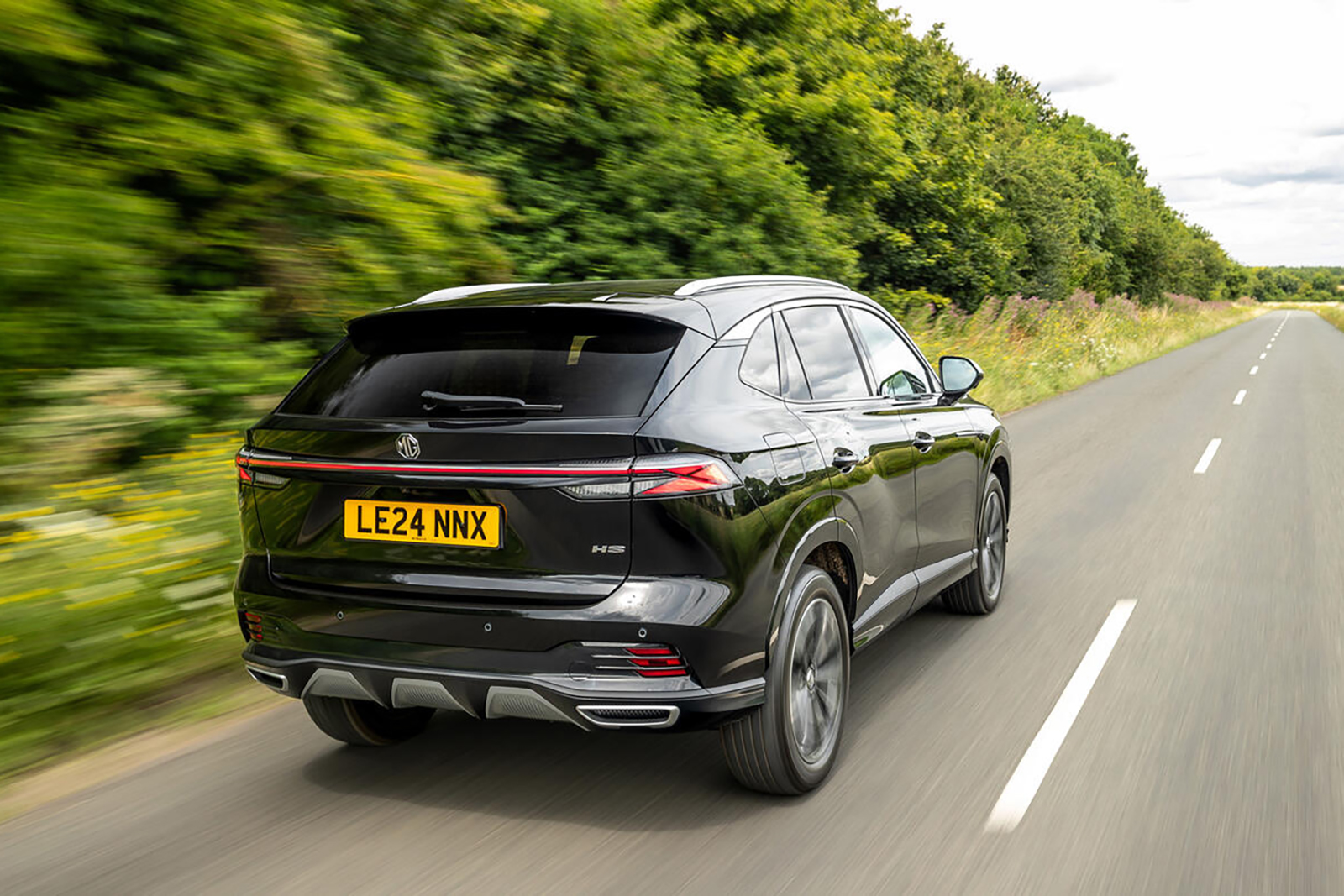
- Design8
- Interior6
- Performance7
- Ride & Handling7
- Costs8
Pros
Enticing entry price
PHEV has 75-mile electric range
Quiet, easy road manners
Cons
Pure-petrol model lacks power
Frustrating assistance systems
Rivals are better dynamically
Best for: company car drivers
The MG HS may well be one of the UK’s greatest unhailed commercial success stories, now sitting among the best selling cars in the UK.
The PHEV doesn’t need to fall back on its engine for a fairly gutsy turn of speed.
This second-generation SUV was introduced in 2024, bringing with it a complete exterior design overhaul, a heavily updated interior and a suite of technology updates.
Its crowning glory, however, is simply what it offers. The plug-in hybrid brings with it a near-25kWh drive battery and some 75 miles of official electric-only range for just a smidge over £30,000.
There are notes of maturity and sophistication about the way it drives too, while the civility of the pure-electric driving at low speeds is worthy of praise.
Read our MG HS review
Finance this car with Drivenfi
Back to top
4. BYD Dolphin
7
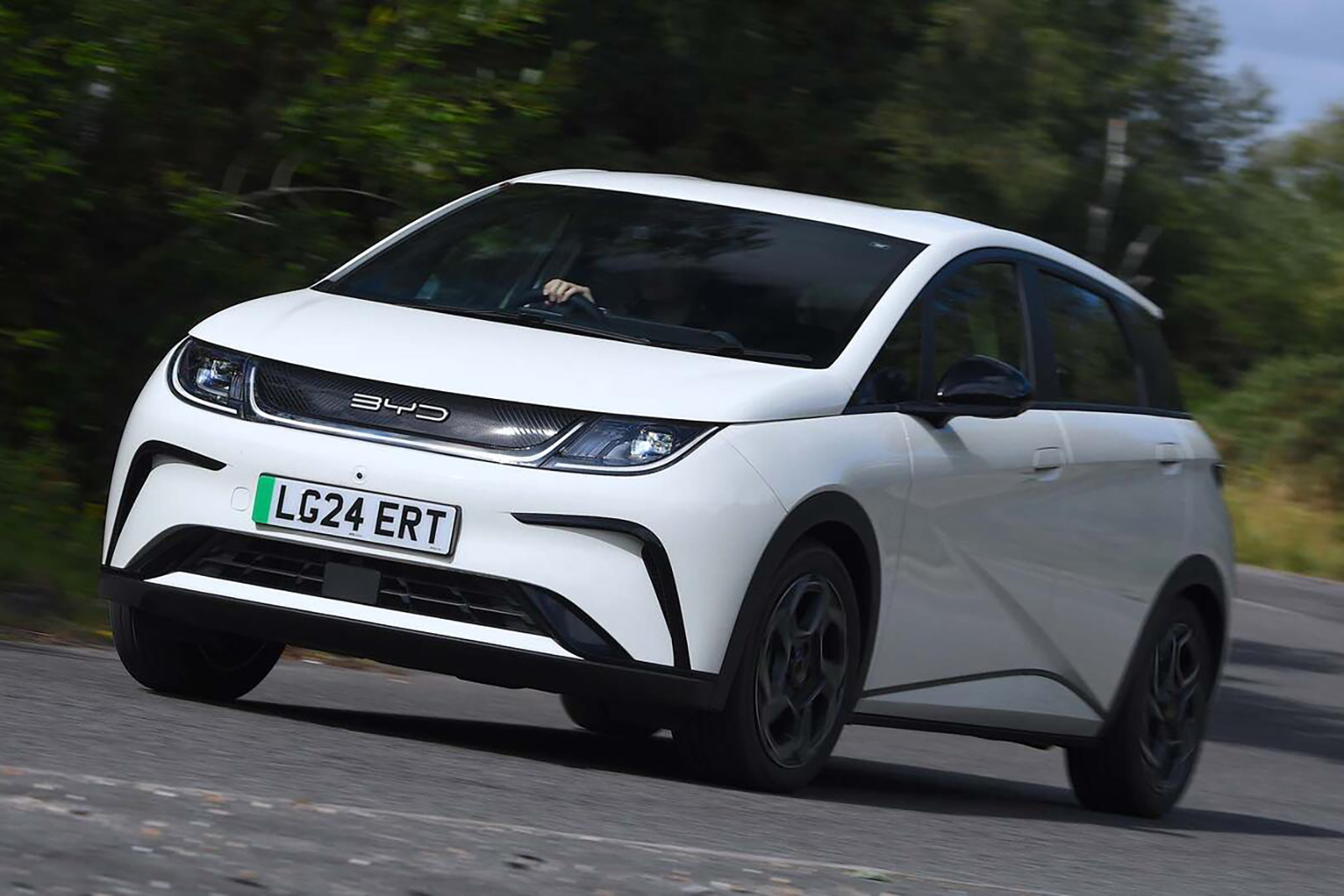
- Design6
- Interior6
- Performance7
- Ride & Handling7
- Costs8
Pros
Interior large enough for adults to get comfy
Impressive range at this price point
Soft suspension makes it pliable to drive
Cons
Infotainment is ill-configured
Numb steering fails to drum up much excitement
Front wheels can brake traction too easily
Best for: electric superminis
In terms of size, the BYD Dolphin sits between the Vauxhall Corsa Electric and Volkswagen ID 3, but it’s usefully cheaper than both.
If you can live with some of the foibles, there’s a lot of medium-range compact electric car for the money here.
The entry-level Active version makes do with 94bhp but should eke out 211 miles (officially) from the little battery.
The Boost gets a bump in power to 174bhp, while the Comfort and Design get 201bhp and a 60.4kWh battery, giving them an official range of up to 265 miles.
In other words, there’s almost something for everyone.
The Dolphin shares a lot of mechanical bits with the Atto 3 crossover (found further down this list), and predictably the pair are quite similar to drive. So it’s comfortable but won’t set your socks on fire.
Read our BYD Dolphin review
Finance this car with Drivenfi
5. MG Cyberster
7
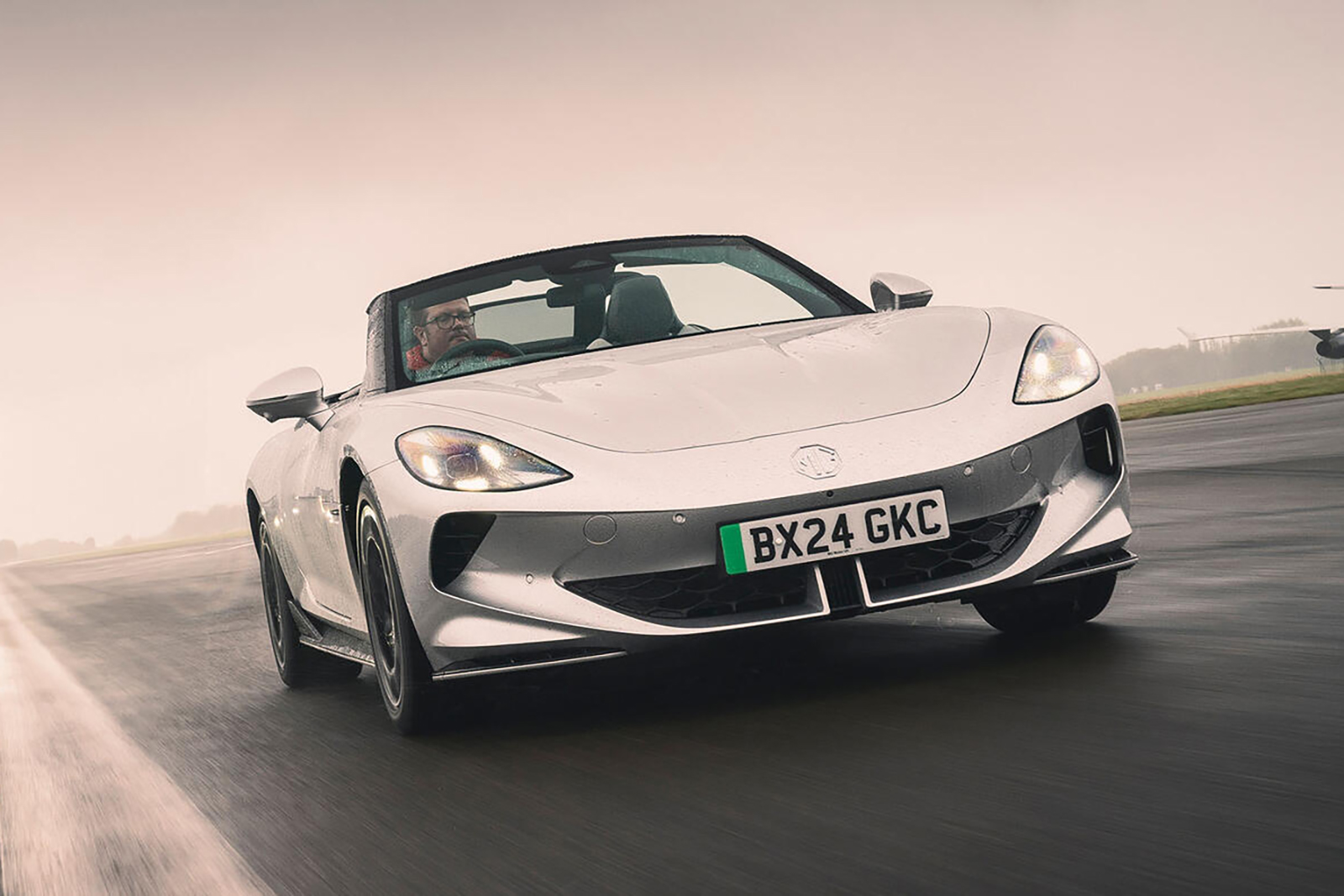
- Design9
- Interior7
- Performance8
- Ride & Handling6
- Costs6
Pros
Supercar looks
Commendable range
Lots of BHP per pound
Cons
High driving position
Infotainment and ADAS are frustrating
Patchy body control can make it heave and pitch
Best for: supercar experience
A hugely significant car for MG here – the first of its new era. It was released to coincide with the company’s 100th anniversary and was largely designed in the UK.
This is a real head-turner, although it lacks the dynamic charisma of the class’s better sports cars.
Does the Cyberster look like a modern MG B? No. But it’s striking enough, aping conventional supercar design rather than mere sports cars.
The standard Trophy model comes with a rear-mounted electric motor making 335bhp and 350lb ft. Then, for around £5000 more, there’s the GT, which gains a second motor at the front for 503bhp, 535lb ft and four-wheel drive.
We would go for the cheaper RWD model, ast this is lighter and feels dartier to drive. The GT is quicker in a straight line but feels a bit too heavy to be classed as a true sports car.
Read our MG Cyberster review
Finance this car with Drivenfi
Back to top
6. BYD Atto 3
6
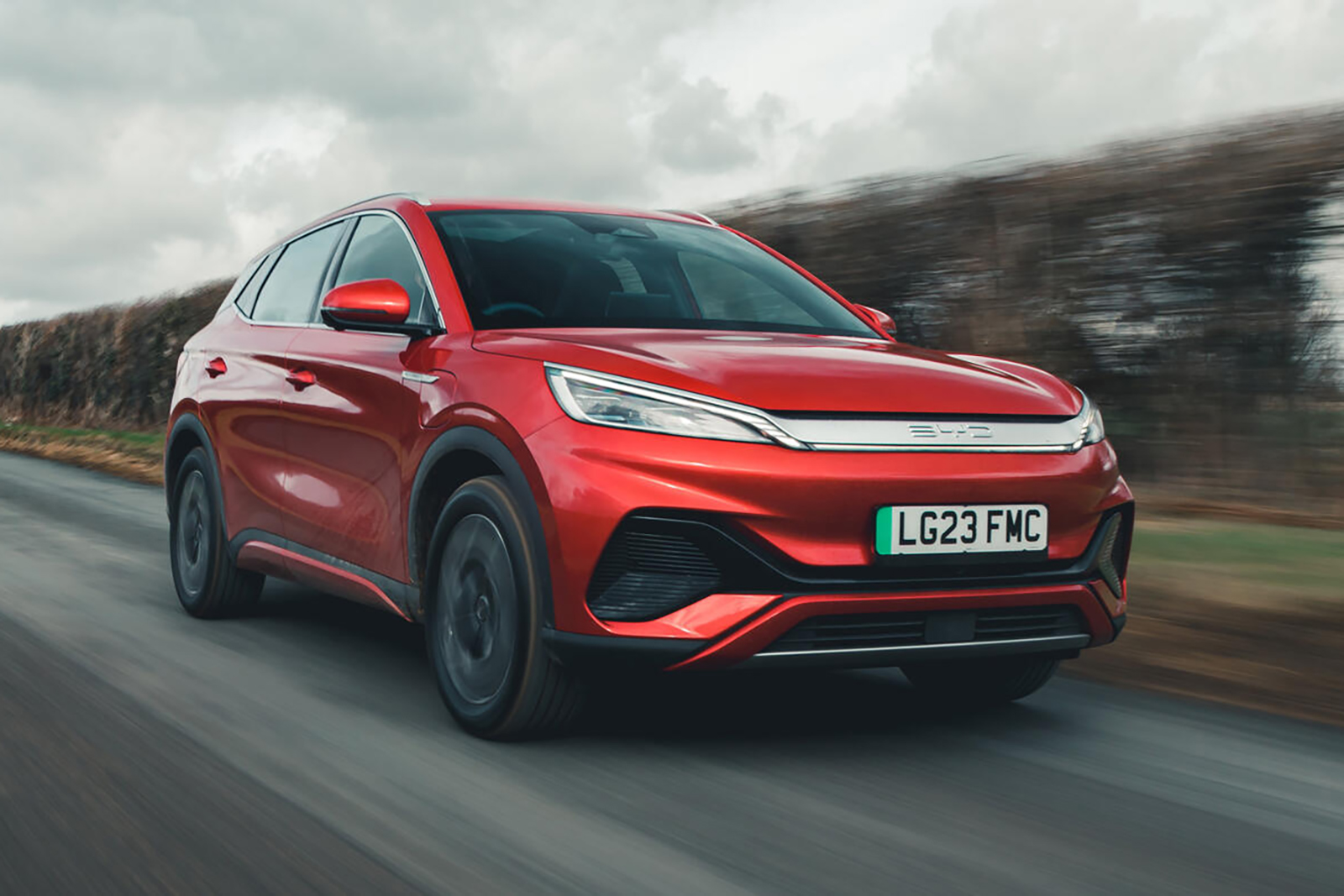
- Design6
- Interior6
- Performance7
- Ride & Handling6
- Costs8
Pros
Good value: lots of the kit for the money
Spacious interior with appealingly quirky design
Soft, plush ride is comfortable
Cons
Fiddly climate controls
Road manners lack some finesse
Unstable phone integration
Best for: interior gimmicks
The Atto 3 was the first car sold by the giant BYD company in the UK.
I love that you can turn off both the heating and air-con but retain fresh-air ventilation.
Social media users were dazzled by its touchscreen, which can rotate from portrait to landscape, as well as its in-door guitar strings – which, to be frank, don’t work very well.
Look beyond the gimmicks, though, and you will find a spacious, well-thought-out electric crossover.
It will easily cover 200 miles in the real world and its four-year/74,500-mile warranty and eight-year/124,000-mile battery warranty are reassuring.
Read our BYD Atto 3 review
Finance this car with Drivenfi
7. MG ZS
6

- Design5
- Interior6
- Performance6
- Ride & Handling6
- Costs7
Pros
Lots of space for the money
Impressive real-world economy
Outright pace for a hybrid crossover is pretty good
Cons
Leaden steering
Firm and fidgety ride
Distracting infotainment
Best for: value
Another SUV from MG, and another one that doubles down on value for money.
The ZS is roomier, cleverer and better-equipped than you would expect for the money.
Less than £20,000 buys you a small crossover with a 1.5-litre petrol engine. But just £1000 or so more will score you a full hybrid, capable of close to 60mpg in our-real world everyday testing.
It’s this ZS we recommend. Its innovative powertrain comprises a 101bhp 1.5-litre four-cylinder Atkinson-cycle petrol engine, a three-speed automatic gearbox and a 134bhp electric motor.
Most of the time, the motor does the driving and the engine works to power the starter motor supplying current to the electrical system.
It sounds complicated but works brilliantly. Around town, it’s much like an EV to drive: crisp, quiet and peppy. But of course there’s no faff in filling up with electricity and a tank of petrol should last some 450 miles.
Read our MG ZS review
Finance this car with Drivenfi
Back to top
8. BYD Seal
6
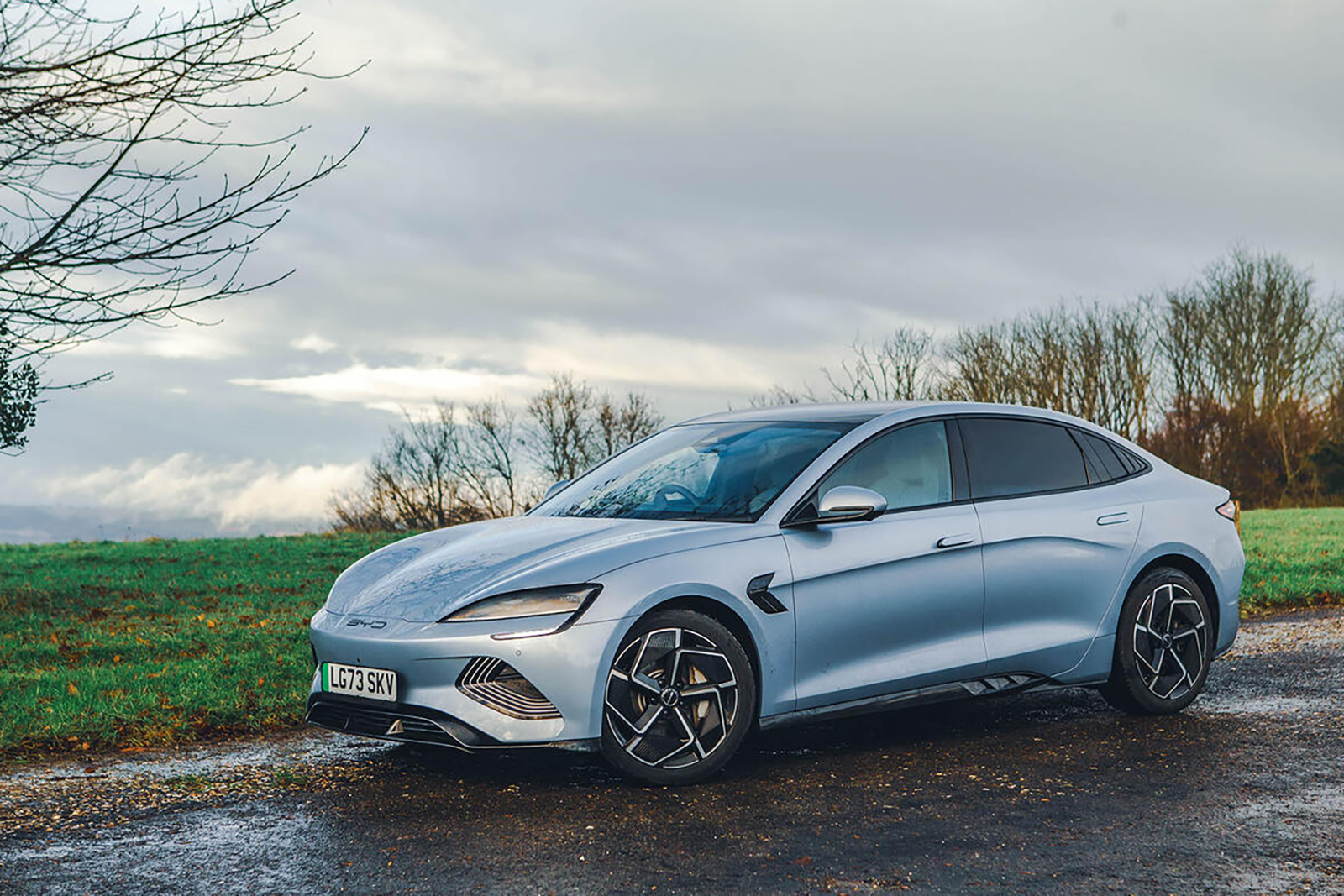
- Design7
- Interior6
- Performance7
- Ride & Handling7
- Costs6
Pros
Impressive high-speed ride quality
Good value
A lot of power for the money
Cons
Terrible user interface
Erratic rapid charging
Poor ADAS
Best for: an upmarket image
Mock the cutesy name all you like, but the Seal is a very serious car.
Apart from the low-speed crashiness, the ride and handling feel sorted – and particularly suited to UK roads.
The Atto 3 and Dolphin found further up this list are aimed at smaller, cheaper segments, but the Seal increases BYD’s stature with a rear-wheel-drive, big-battery, aerodynamic saloon.
Dual-motor cars come with a whopping great big 523bhp and a 3.8sec 0-62mph time, while rear-wheel-drive models still have a very healthy 308bhp.
The Seal feels pleasantly brisk at all times, while at motorway speeds it’s pillowy soft, aided by super-supportive seats. The low-speed ride can feel a bit wooden, mind you.
Read our BYD Seal review
Finance this car with Drivenfi
9. Leapmotor T03
6
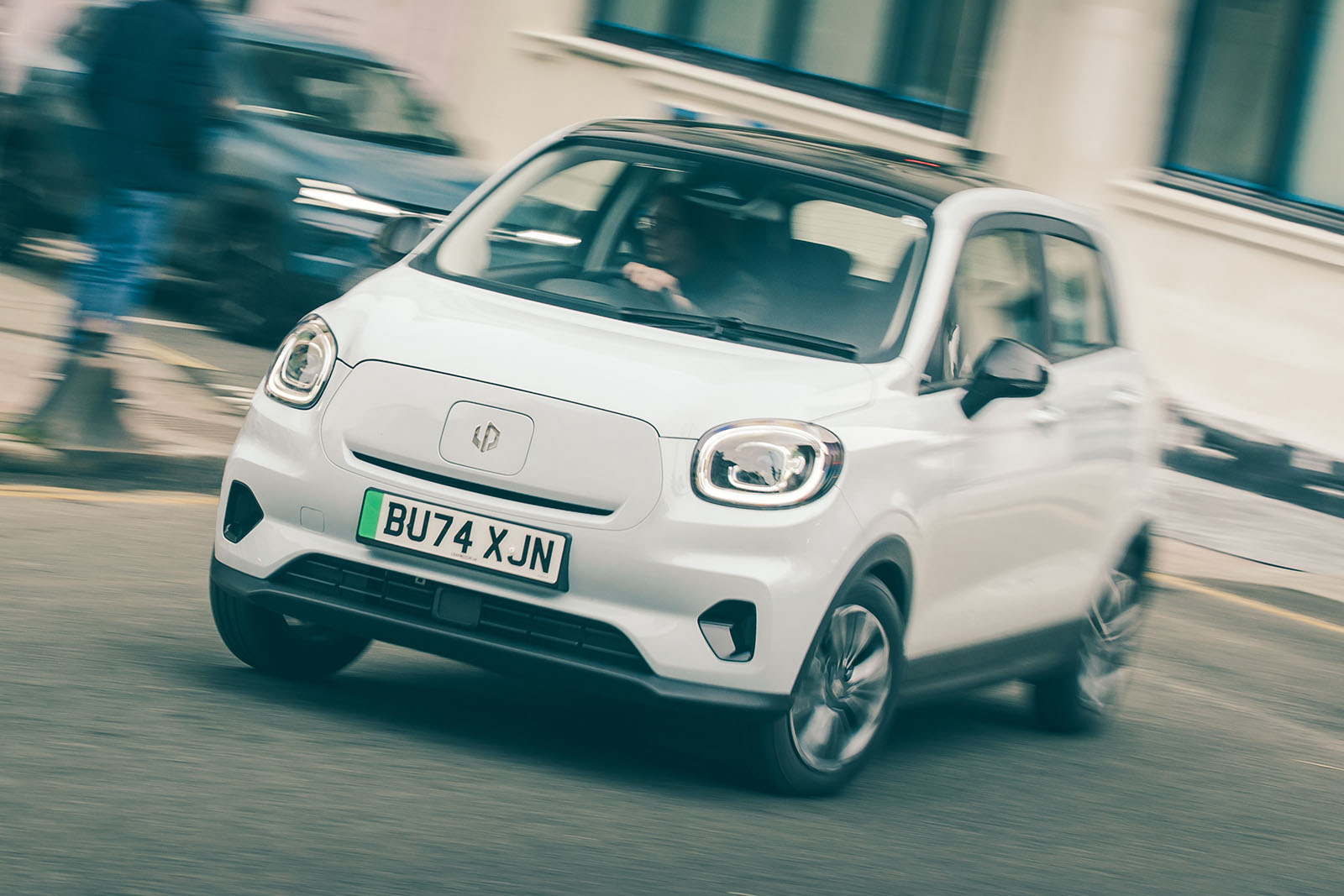
- Design5
- Interior5
- Performance5
- Ride & Handling7
- Costs9
Pros
A small car but large enough for adults
Enough performance for the motorway
One of the cheapest electric cars
Cons
Lack of physical buttons and switches frustrates
Irksome ADAS are a pain to turn off
Ride is a little unsettled at motorway speeds
Best for: basic motoring
The cheapest car on this list is from a brand you might not have heard of. Stellantis owns 20% of the company and Leapmotor cars are sold in Stellantis dealerships in the UK.
The T03 proves cheap doesn’t always mean nasty,
There’s only one trim level and one powertrain for the T03, which means a front-mounted 94bhp motor is your only choice. At least there are a few paint colours.
As standard, the T03 gets an 8.0in digital instrument display and an infotainment touchscreen with sat-nav and a DAB radio. Importantly, no Apple CarPlay or Android Auto here.
Read our Leapmotor T03 review
Finance this car with Drivenfi
Back to top
10. Jaecoo 7
6
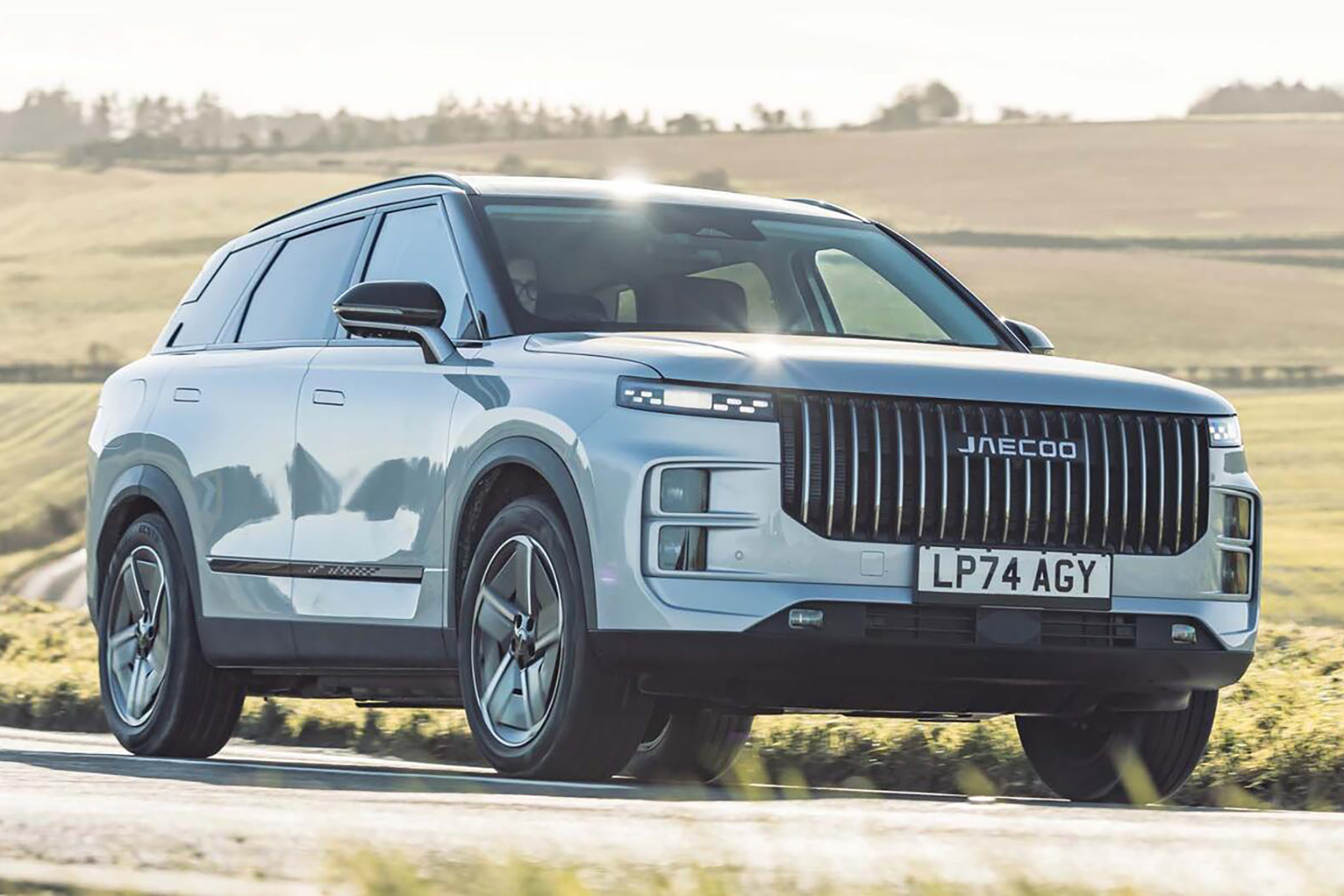
- Design7
- Interior6
- Performance6
- Ride & Handling6
- Costs6
Pros
Bright and airy cabin
PHEV is smooth and quiet
Undercuts Korean and European rivals
Cons
Ride is too soft
Petrol engine is thrashy
Interior materials lack quality
Best for: big, bold styling
Another marque here that might need some explaining. Created by Chery, one of China’s largest car makers, Jaecoo is the sister brand of Omoda.
Shows signs of promise with a practical interior and, in the PHEV version, a decent electric-only range.
Jaecoo sees the 7 as a bit of cut-price Range Rover Evoque and is offered in both petrol and plug-in hybrid guises.
Opening the range is the 1.6-litre petrol. It drives the front wheels through a seven-speed dual-clutch automatic gearbox and can be snapped up for around £30,000.
For around £5000 more, you can get a 4WD PHEV model, which uses a 1.5-litre petrol engine and 18.3kWh battery.
Like with the MG HS on this list, the PHEV is the one to go for. It’s pretty hushed and quick enough for day-to-day and is much, much more economical than the standard petrol.




